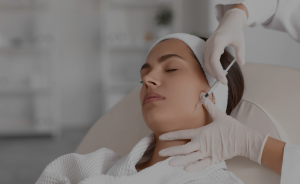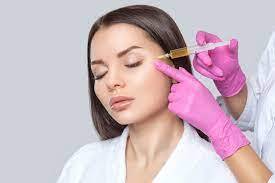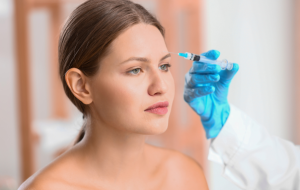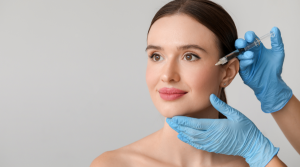If you’re considering getting Botox (Botulinum Toxin injection), you’re not alone. Millions of people worldwide choose this popular cosmetic treatment to reduce the appearance of facial wrinkles like frown lines, crow’s feet, and forehead lines.
Consulting with a professional Botox clinic is crucial for safe and effective treatments, ensuring accurate dosage and personalized care.
But before you take the plunge and schedule your appointment for Botox Toronto, it’s essential to understand the procedure and ask the right questions to ensure you’re fully informed.
Whether you’re considering Botox injections for cosmetic purposes or medical conditions like chronic migraines, cervical dystonia, or excessive sweating, knowing what to ask can help you avoid complications and achieve the best possible results.
This comprehensive guide will cover expert advice on the key questions you should ask before getting botulinum toxin injections.

What is Botox?
Before you answer the questions, it’s crucial to understand Botox and how it works. Botox is a brand name for a product derived from botulinum toxin produced by the bacterium Clostridium botulinum. Botox uses botulinum toxin type A, a purified protein derived from the Clostridium botulinum bacterium.
While Clostridium botulinum is also responsible for food poisoning, the botulinum toxin used in Botox is purified and highly controlled.
How Does It Work?
When a botox injection is administered into specific facial muscles, it temporarily blocks the signals from the nerve endings to the injected muscles, reducing their ability to contract. This smoothing affects facial wrinkles like frowns, forehead, and bunny lines.
Botox injections are commonly used for both cosmetic purposes and medical purposes, treating a range of issues from upper limb spasticity and urinary incontinence to neck spasms and overactive bladder.
Questions to Ask Before Getting Botox
Is Botox Safe for Me?
One of the most important questions to ask your healthcare provider or plastic surgeon is whether Botox is safe. Botulinum toxin injections are generally safe when administered by experienced professionals but may not be suitable for everyone.
The Food and Drug Administration (FDA) has approved Botox for various treatments, ensuring its safety and effectiveness when administered by licensed healthcare providers.
Your doctor will need to assess your health conditions, including any allergic reaction to ingredients in Botox and whether you’re on medications like blood thinners.
People with certain neuromuscular disorders like cerebral palsy or those who have a history of difficulty breathing****trouble swallowing, or vision problems may not be ideal candidates for the Botox shots.
Make sure to discuss any pre-existing medical conditions or medications you’re taking to ensure Botox is the right option for you.
What Are the Side Effects of Botox?
While Botox is generally considered safe, there are potential adverse effects. Some common side effects include:
- Flu-like symptoms such as mild headaches
- Muscle weakness in the nearby muscles of the injection site
- Temporary bruising or swelling at the injection sites
- Drooping eyelids or blurred vision
Though rare, serious side effects include difficulty breathing and trouble swallowing. It’s crucial to ask your provider about the likelihood of experiencing these side effects and what steps you should take if you encounter any.
How Many Units of Botox Will I Need?
The number of units required for a Botox treatment depends on the treatment area and the extent of your wrinkles or medical concerns. For example:
- Forehead lines typically require between 10 and 30 units.
- Crow’s feet usually need 6 to 12 units per side.
- Frown lines often require 20 to 30 units.
Discussing this with your healthcare provider will give you a clear understanding of how much Botox you’ll need and how much your treatment will cost.
Will Botox Hurt?
Many patients are concerned about whether Botox injections will hurt. The good news is that the procedure is relatively quick, and most people experience only minimal discomfort.
The needles used for botulinum toxin injections are very fine, so the injection feels like a small pinch.
For those with lower pain tolerance, your doctor may apply vibration anesthesia or a numbing agent, such as topical anesthesia, to the injection sites to reduce discomfort.
If you’re worried about whether Botox hurt, be sure to discuss pain management options with your healthcare provider before the procedure.
How Long Will the Results Last?
One key question to ask before getting Botox is how long the results will last. Botox effects are temporary, typically lasting 3 to 6 months, depending on the individual and the treatment area.
Over time, muscle activity returns as the botulinum toxins wear off, and you may notice the reappearance of facial wrinkles.
Many patients schedule additional treatments every few months for long-lasting results to maintain a youthful appearance. Ask your doctor about their recommended additional treatment to schedule based on your goals.
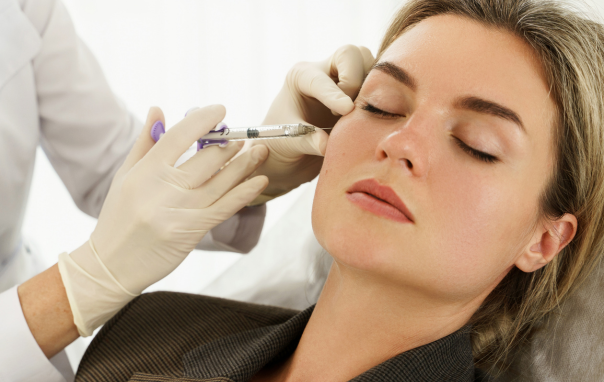
How Does Botox Work for Different Areas of the Face and Body?
Botox can treat many facial and body concerns beyond just reducing facial wrinkles. Be sure to ask how Botox works for different areas:
- Forehead lines: Botox smooths these lines by temporarily reducing the activity of the muscles that cause them.
- Crow’s feet: Botox injections near the eyes relax the muscles responsible for these lines.
- Frown lines: Botox reduces the appearance of vertical lines between the eyebrows.
- Bunny lines: Botox can soften the fine lines on the sides of your nose.
- Excessive sweating: Botox can be injected into areas like the underarms to reduce excessive sweating.
- Chronic migraine: For individuals who suffer from migraines, Botox can reduce their frequency and severity when injected into specific areas of the neck and head.
Discuss your specific concerns with your provider to ensure that Botox suits the areas you wish to treat.
What is the Recovery Like After Botox Injections?
Recovery after Botox injections is typically easy, with most patients experiencing little to no downtime. However, you should avoid lying down, exercising, or rubbing the injection site for at least four hours after the procedure to prevent Botox from migrating to nearby muscles.
You may experience minor side effects, such as temporary bruising or swelling at the injection sites, but these usually resolve within a few hours to days. Your doctor will provide specific aftercare instructions to minimize side effects and ensure a smooth recovery.
Can I Combine Botox with Other Cosmetic Treatments?
Botox is often combined with other cosmetic treatments to achieve more comprehensive results. For example, some patients pair Botox treatments with dermal fillers, such as hyaluronic acid injections, to address wrinkles and loss of volume in areas like the cheeks and lips.
Ask your provider if combining treatments would be beneficial for your specific goals. They can create a customized treatment plan to target multiple concerns in a session or over time.
Are There Any Medical Conditions That Botox Can Treat?
While Botox is best known for its cosmetic use in treating facial wrinkles, it’s also FDA-approved for various medical purposes. Some of the common medical conditions treated with Botox include:
Cervical dystonia:
A condition where neck muscles contract uncontrollably, causing neck pain and abnormal head positions.
Chronic migraine:
Botox injections can be used to reduce the frequency, reduce pain, and severity of migraines.
The botulinum toxin used in Botox is derived from the same toxin responsible for botulism, but it is used in a purified and controlled form to ensure safety.
Upper limb spasticity:
Botox can help relax muscles that have become stiff due to stroke or multiple sclerosis.
Overactive bladder:
Botox can be injected into the bladder to reduce symptoms of urinary incontinence.
Excessive sweating:
Botox is injected into areas prone to excessive sweating, such as the forehead wrinkles armpits, palms, or feet, to block the nerve signals responsible for sweat production.
Be sure to ask your doctor if botulinum toxin injections are suitable for treating any medical conditions you may have.
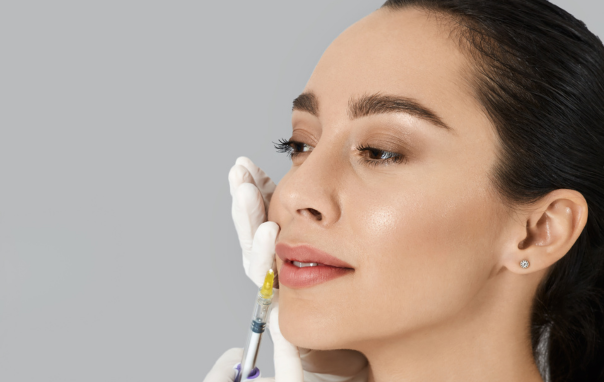
What Should I Avoid Before and After the Botox Treatment?
To ensure the best possible results and minimize side effects, it’s important to follow pre- and post-care instructions. Here’s what you should ask about:
Before the procedure:
Avoid taking blood thinners or medications that increase the risk of swelling or bruising afterwards, such as aspirin, ibuprofen, or vitamin E, for at least a week before your appointment.
After the procedure:
To prevent the toxin from migrating, refrain from rubbing the injection sites, lying down, or engaging in strenuous activity for at least four hours after your treatment.
To achieve optimal results, ask your healthcare provider for a detailed list of things to avoid before and after your Botox treatment.
Are There Any Risks of Adverse Reactions?
Although rare, there are potential risks and adverse reactions associated with Botox injections. Ask your healthcare provider about the likelihood of experiencing allergic reactions, including:
- Rash or itching at the injection site
- Difficulty breathing or trouble swallowing
- Severe muscle weakness
- Blurred vision or other vision problems
If you experience any of these symptoms, seeking immediate medical attention is crucial.
How Much Does Botox Cost?
The cost of Botox varies depending on the number of units required and the clinic’s location. On average, Botox costs between $10 and $20 per unit. The total price of your treatment will depend on the areas being treated and how many units you need.
It’s essential to discuss pricing with your Botox Toronto provider ahead of time so that you have a clear understanding of the cost.
Conclusion
Getting Botox injections can be a highly effective way to reduce facial wrinkles, enhance your appearance, or treat various medical conditions.
However, asking the right questions before the procedure ensures you’re fully informed about the risks, benefits, and expected results.
By discussing your health conditions, goals, and concerns with an experienced healthcare provider or plastic surgeon, you’ll be better equipped to make the best decision for your needs.
Whether you’re seeking Botox cosmetic treatments for frown lines and wrinkles or medical treatments for conditions like cervical dystonia or chronic migraine, being informed and prepared will help you achieve the best possible outcome.
If you’re considering Botox, contact Beauty Aesthetics, Toronto, for a consultation with our expert team. We’ll guide you through the process and provide the answers you need to make an informed decision about your treatment.


